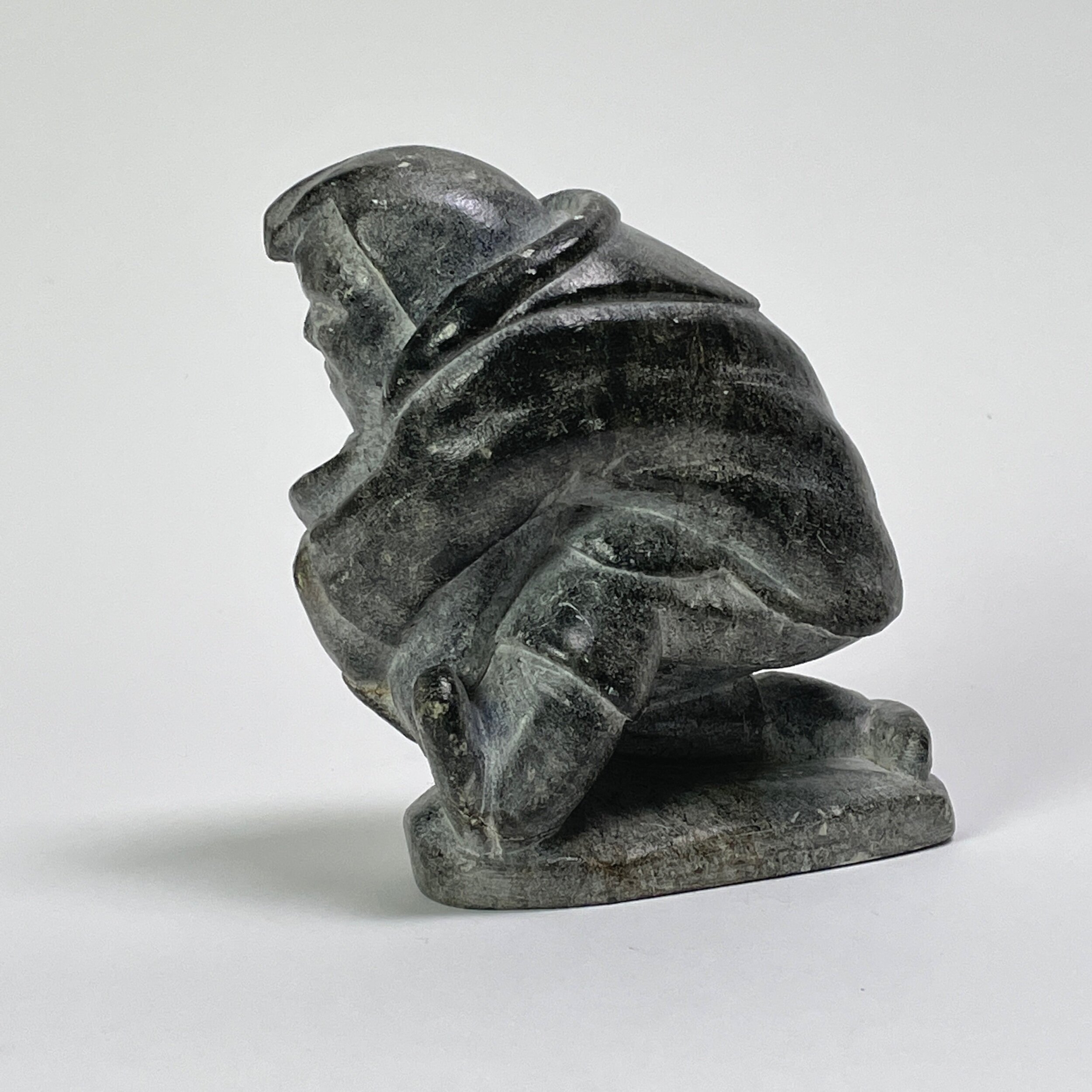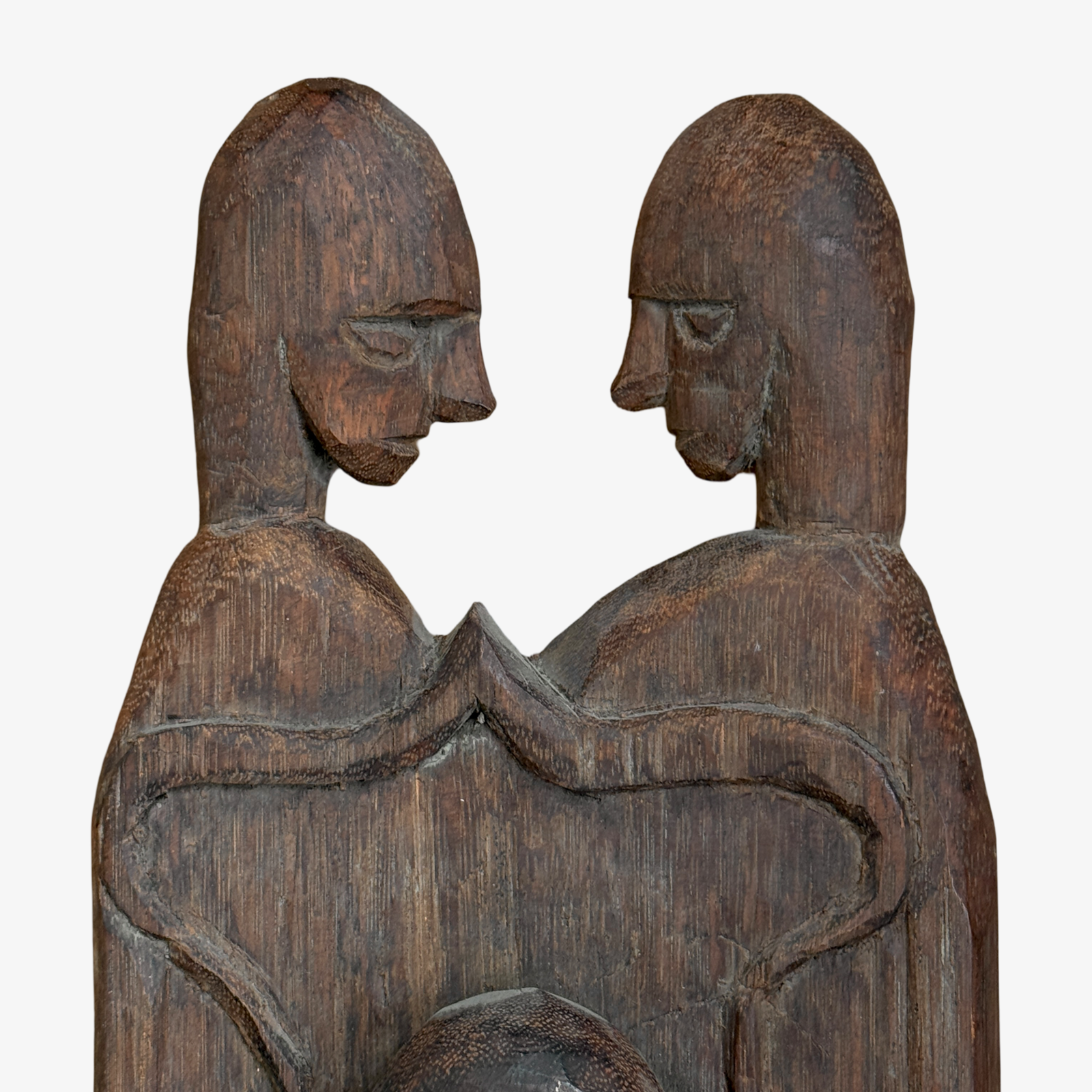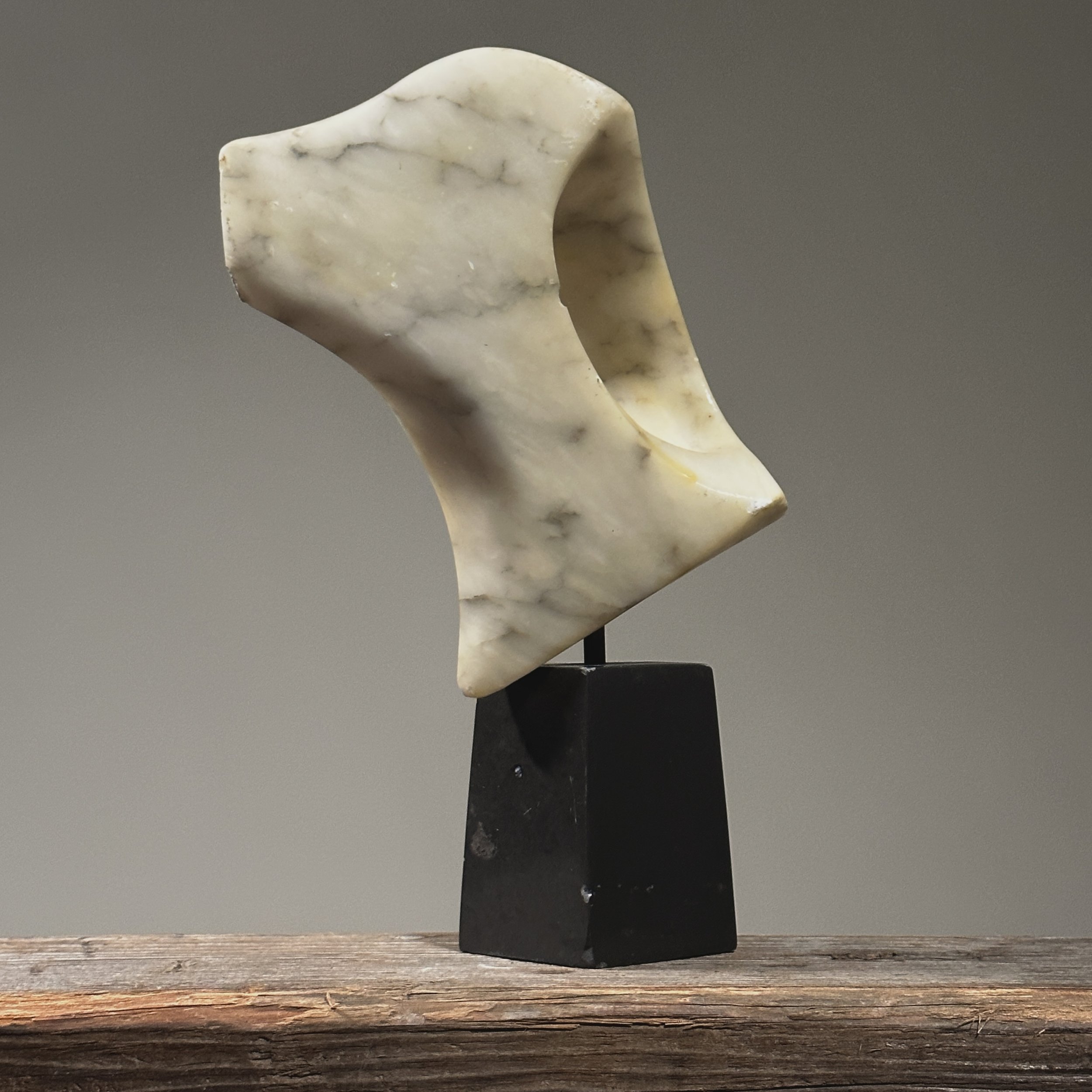 Image 1 of 6
Image 1 of 6

 Image 2 of 6
Image 2 of 6

 Image 3 of 6
Image 3 of 6

 Image 4 of 6
Image 4 of 6

 Image 5 of 6
Image 5 of 6

 Image 6 of 6
Image 6 of 6







Jimmy Inaruli Arnamissak (Inuit, 1946-2003) - Soapstone Carving of Figure with Fish (Signed)
Jimmy Inaruli Arnamissak (Inuit, 1946-2003) - Soapstone Carving of Figure with Fish (Signed). Leaning figure with fish in hand. Signed on the bottom “Jimmy Smith”. In good condition with wear conducive with age and material.
Size: 6”H x 5”W x 3”D
Jimmy Inaruli Arnamissak was born on March 31, 1946 at Cape Smith; his alternative name "Jimmy Smith" is derived from his place of birth, where he lived until circa 1956. After his father Silassie was killed while hunting seal, his mother Louisa became the sole source of support for the family. In 1957, to supplement her pension, Jimmy began to carve. Through hard work and long hours he developed his talent and is now recognized as one of Arctic Quebec's leading sculptors. After successful tenure as the manager of the local cooperative, Jimmy resigned to devote full-time to carving. Although Jimmy's mother died in 1975 she continued to occupy a central position in his life. Upon close inspection one discerns Louisa's facial features on Jimmy's female figures. Furthermore, a central theme in his work began to emerge: that of the active mother and wife engaged in domestic activities such as, tending children, preparing hides, making drum music,etc. Whether carving traditional or contemporary themes, Jimmy pays careful attention to detail.
Human faces are often carved separately in ivory inlay, a technique that has been utilized by several Arctic Quebec sculptors since the early 1950s. In 1986, Jimmy's work was included in a exhibition of Inuit and African soapstone carving that was shown in Kisii, Kenya. Subsequently, he was invited to work in the Kenyan village of Tabacca in August of that year as part of a cross-cultural exchange sponsored by the International Development Research Centre in Ottawa.
Jimmy Inaruli Arnamissak (Inuit, 1946-2003) - Soapstone Carving of Figure with Fish (Signed). Leaning figure with fish in hand. Signed on the bottom “Jimmy Smith”. In good condition with wear conducive with age and material.
Size: 6”H x 5”W x 3”D
Jimmy Inaruli Arnamissak was born on March 31, 1946 at Cape Smith; his alternative name "Jimmy Smith" is derived from his place of birth, where he lived until circa 1956. After his father Silassie was killed while hunting seal, his mother Louisa became the sole source of support for the family. In 1957, to supplement her pension, Jimmy began to carve. Through hard work and long hours he developed his talent and is now recognized as one of Arctic Quebec's leading sculptors. After successful tenure as the manager of the local cooperative, Jimmy resigned to devote full-time to carving. Although Jimmy's mother died in 1975 she continued to occupy a central position in his life. Upon close inspection one discerns Louisa's facial features on Jimmy's female figures. Furthermore, a central theme in his work began to emerge: that of the active mother and wife engaged in domestic activities such as, tending children, preparing hides, making drum music,etc. Whether carving traditional or contemporary themes, Jimmy pays careful attention to detail.
Human faces are often carved separately in ivory inlay, a technique that has been utilized by several Arctic Quebec sculptors since the early 1950s. In 1986, Jimmy's work was included in a exhibition of Inuit and African soapstone carving that was shown in Kisii, Kenya. Subsequently, he was invited to work in the Kenyan village of Tabacca in August of that year as part of a cross-cultural exchange sponsored by the International Development Research Centre in Ottawa.
Jimmy Inaruli Arnamissak (Inuit, 1946-2003) - Soapstone Carving of Figure with Fish (Signed). Leaning figure with fish in hand. Signed on the bottom “Jimmy Smith”. In good condition with wear conducive with age and material.
Size: 6”H x 5”W x 3”D
Jimmy Inaruli Arnamissak was born on March 31, 1946 at Cape Smith; his alternative name "Jimmy Smith" is derived from his place of birth, where he lived until circa 1956. After his father Silassie was killed while hunting seal, his mother Louisa became the sole source of support for the family. In 1957, to supplement her pension, Jimmy began to carve. Through hard work and long hours he developed his talent and is now recognized as one of Arctic Quebec's leading sculptors. After successful tenure as the manager of the local cooperative, Jimmy resigned to devote full-time to carving. Although Jimmy's mother died in 1975 she continued to occupy a central position in his life. Upon close inspection one discerns Louisa's facial features on Jimmy's female figures. Furthermore, a central theme in his work began to emerge: that of the active mother and wife engaged in domestic activities such as, tending children, preparing hides, making drum music,etc. Whether carving traditional or contemporary themes, Jimmy pays careful attention to detail.
Human faces are often carved separately in ivory inlay, a technique that has been utilized by several Arctic Quebec sculptors since the early 1950s. In 1986, Jimmy's work was included in a exhibition of Inuit and African soapstone carving that was shown in Kisii, Kenya. Subsequently, he was invited to work in the Kenyan village of Tabacca in August of that year as part of a cross-cultural exchange sponsored by the International Development Research Centre in Ottawa.






























